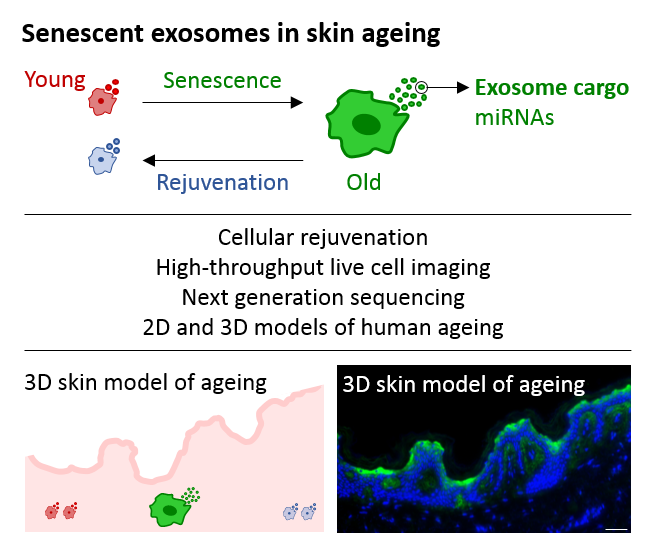


There is compelling evidence that senescence drives ageing and may confer a uni-directionality to ageing. However, we have unexpectedly achieved senescence reversal yielding a highly efficient protocol for human cell rejuvenation (Lowe et al., Genome Biology, 2015).
Senescence can also lead to increased exosome release. Once liberated into the extracellular milieu, these tiny vesicles (50-90nm) are an elegant means of cell-to-cell communication. Senescence is also associated with changes in miRNA expression (Overhoff et al., NAR, 2014). miRNAs can be packaged into exosomes, and thus we hypothesises that the exosome’s cargo alters during senescence and plays an important role in ageing phenotypes.
To explore this we will utilise a spectrum of cutting edge technologies including our recently developed protocol for cellular rejuvenation, high-throughput live cell imaging, next generation sequencing, and sophisticated 3D systems to model complex in vivo relationships and examine the mechanisms of skin ageing.